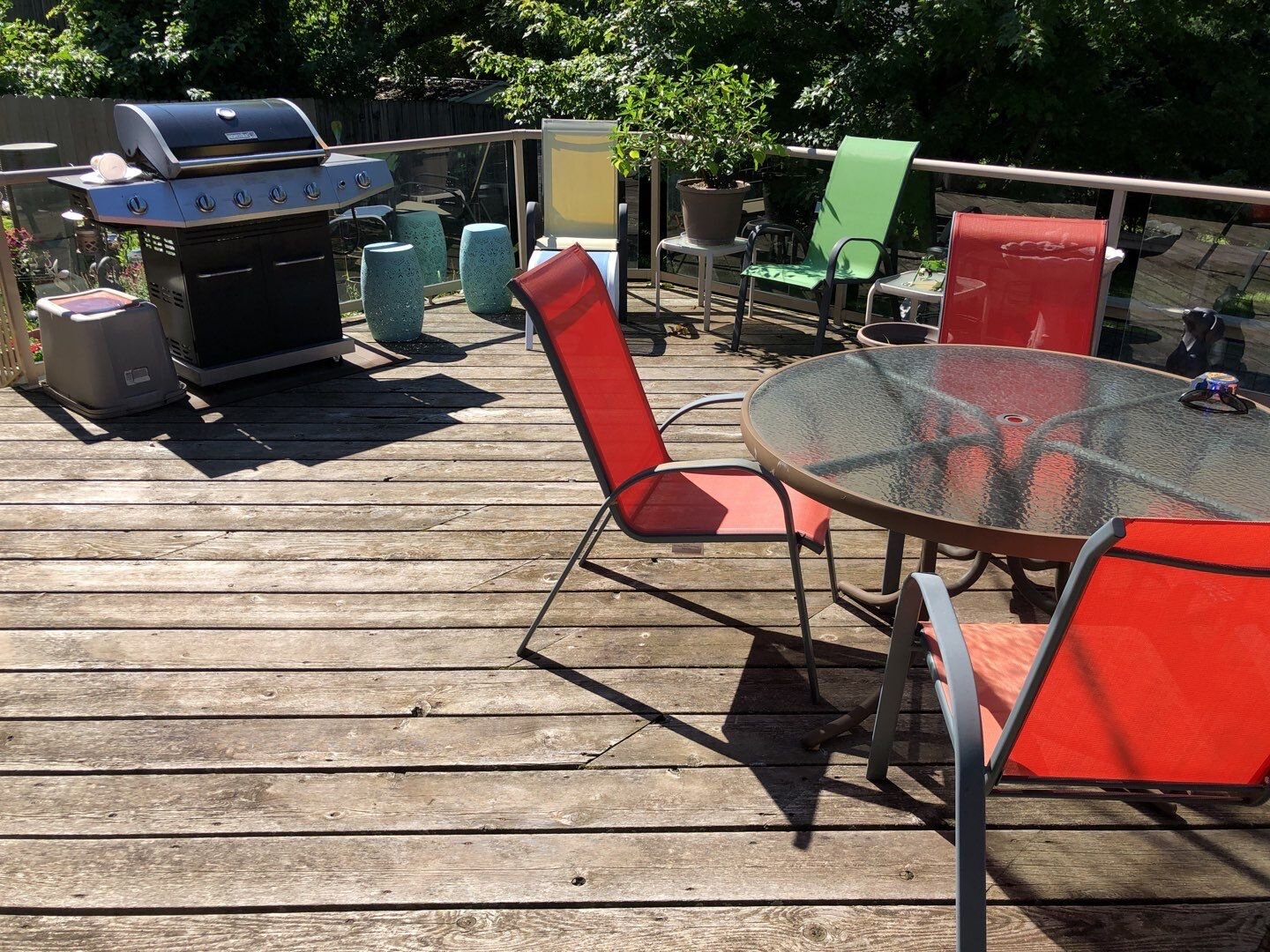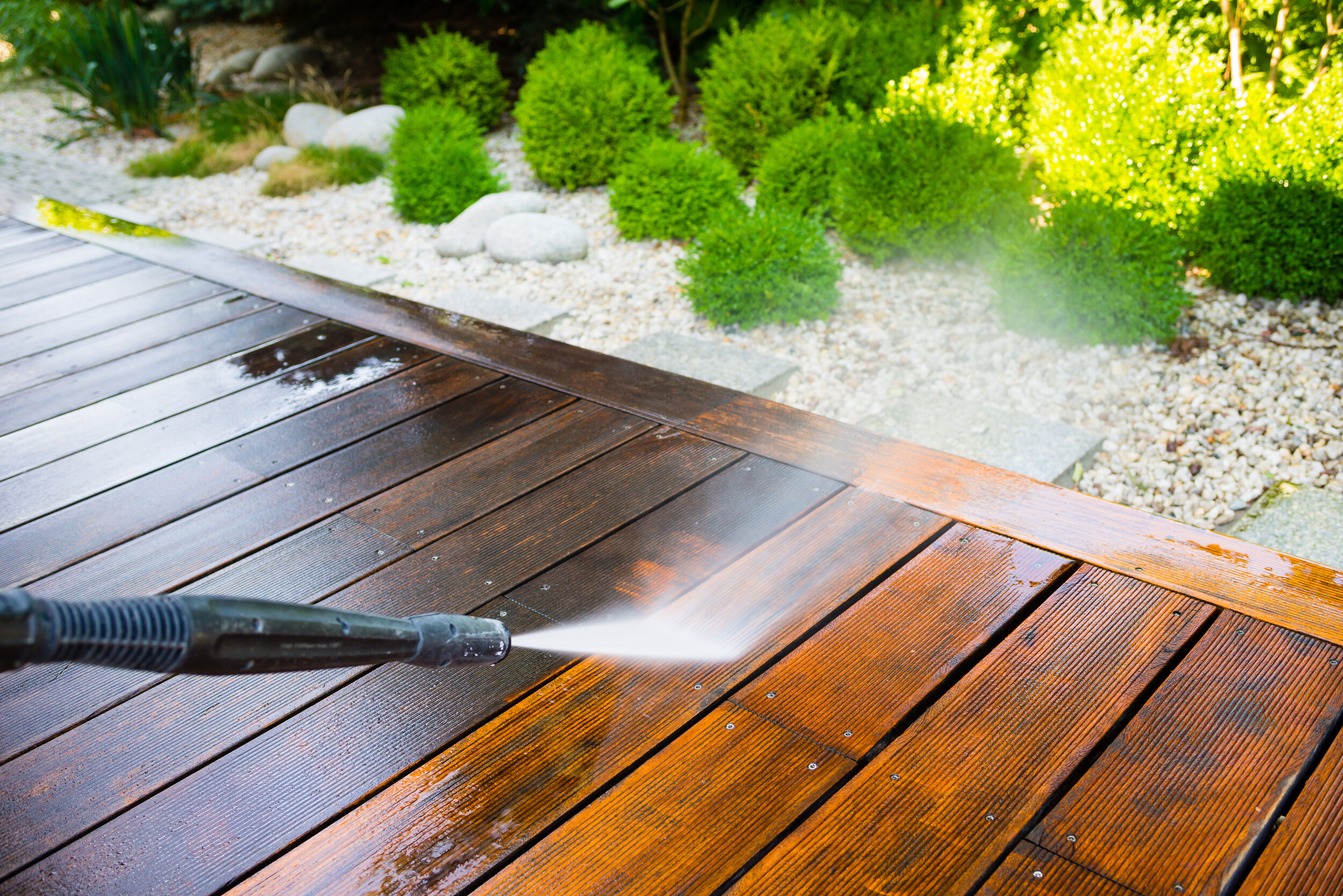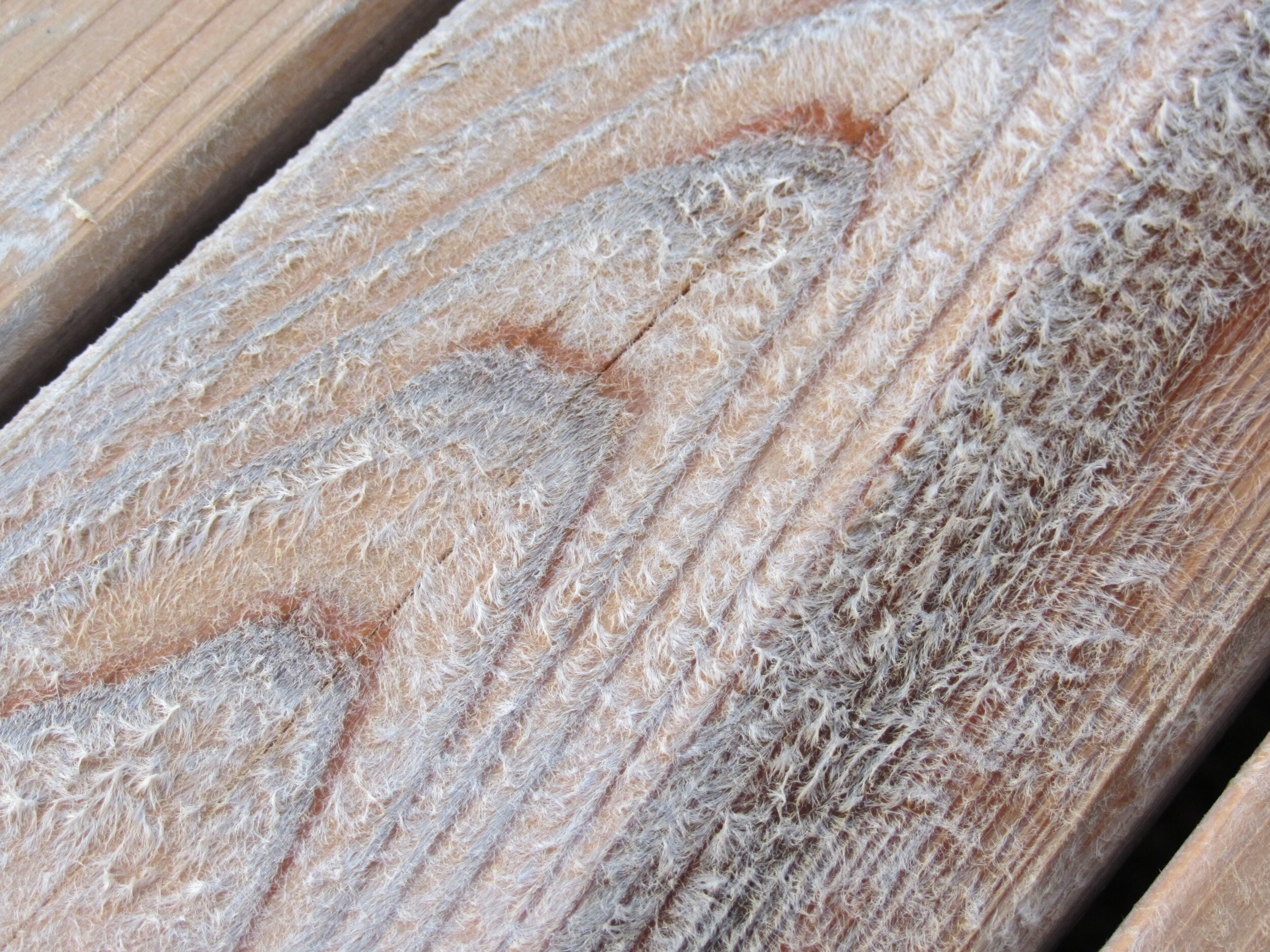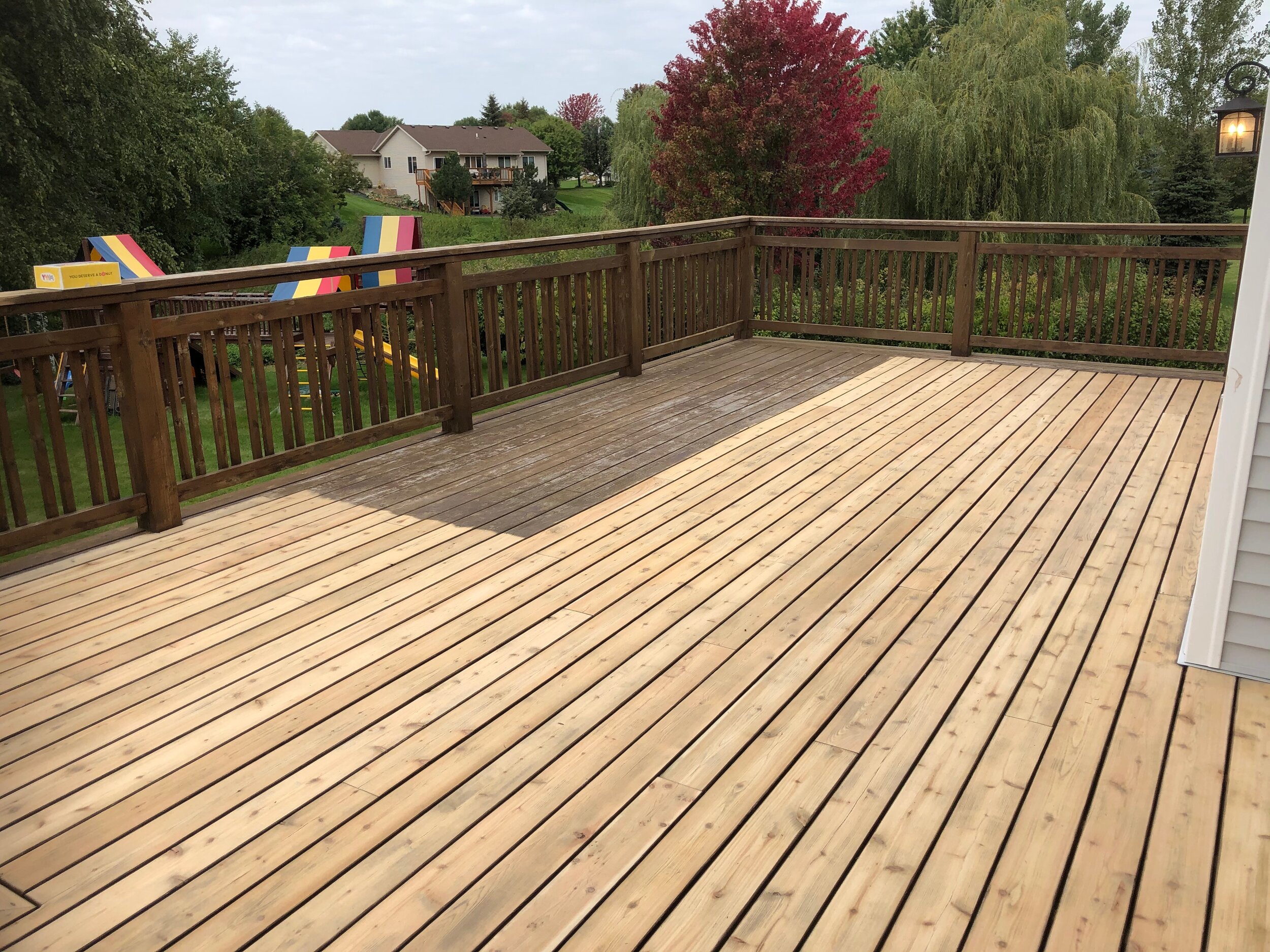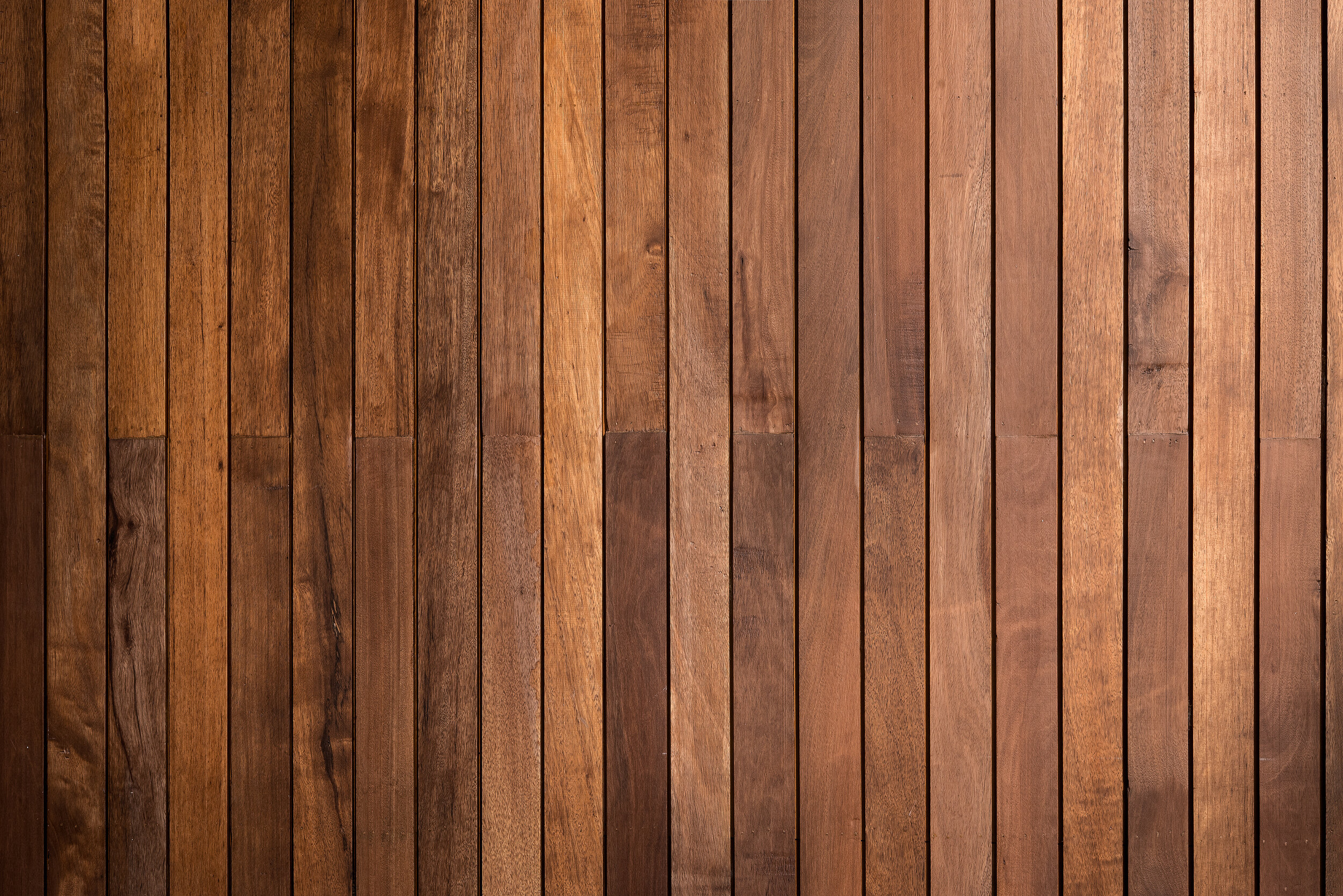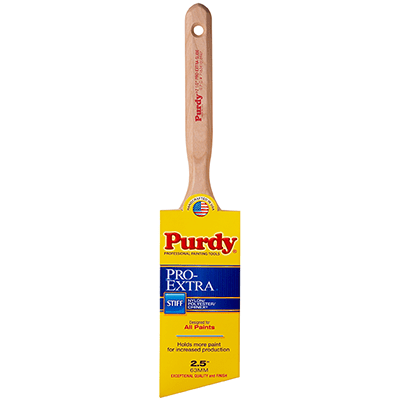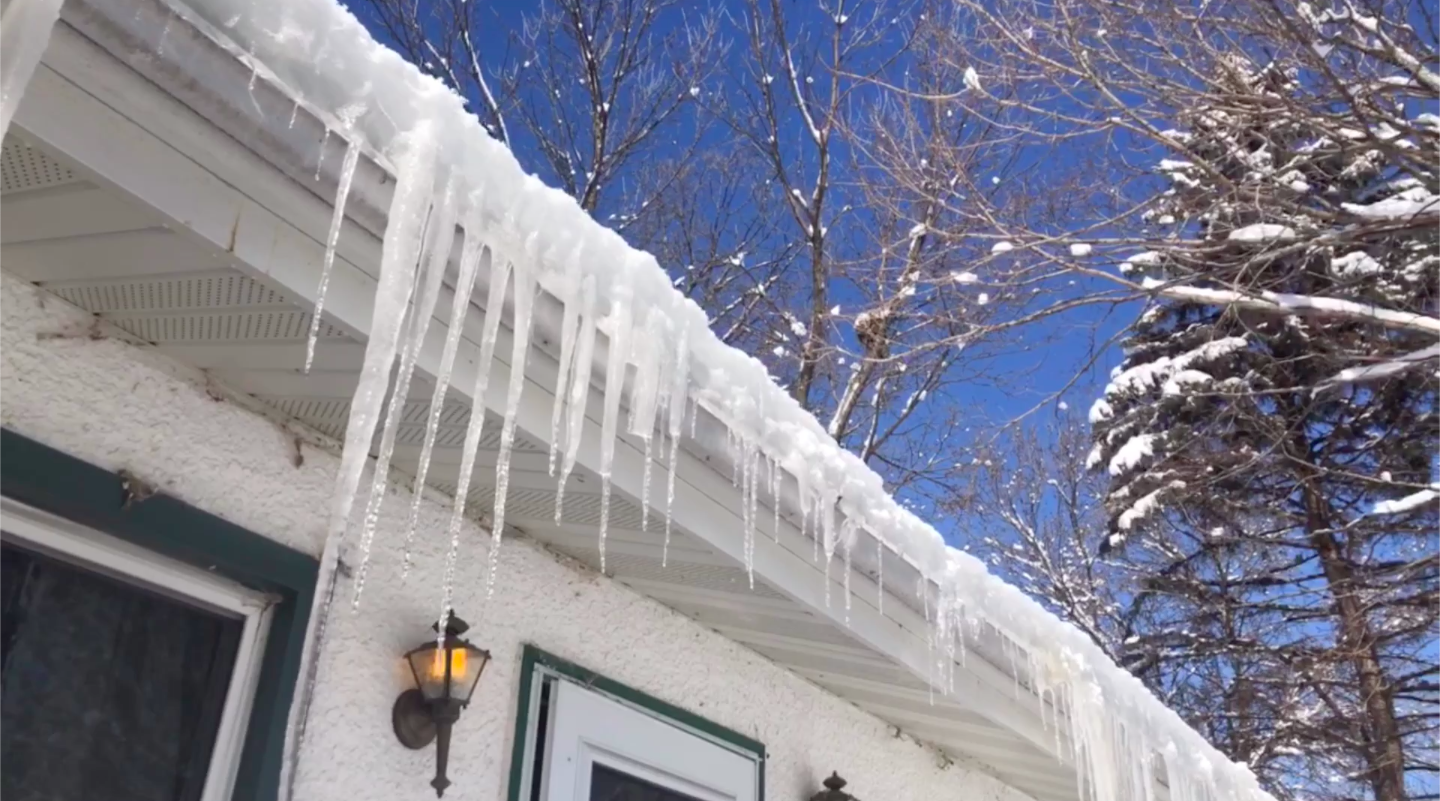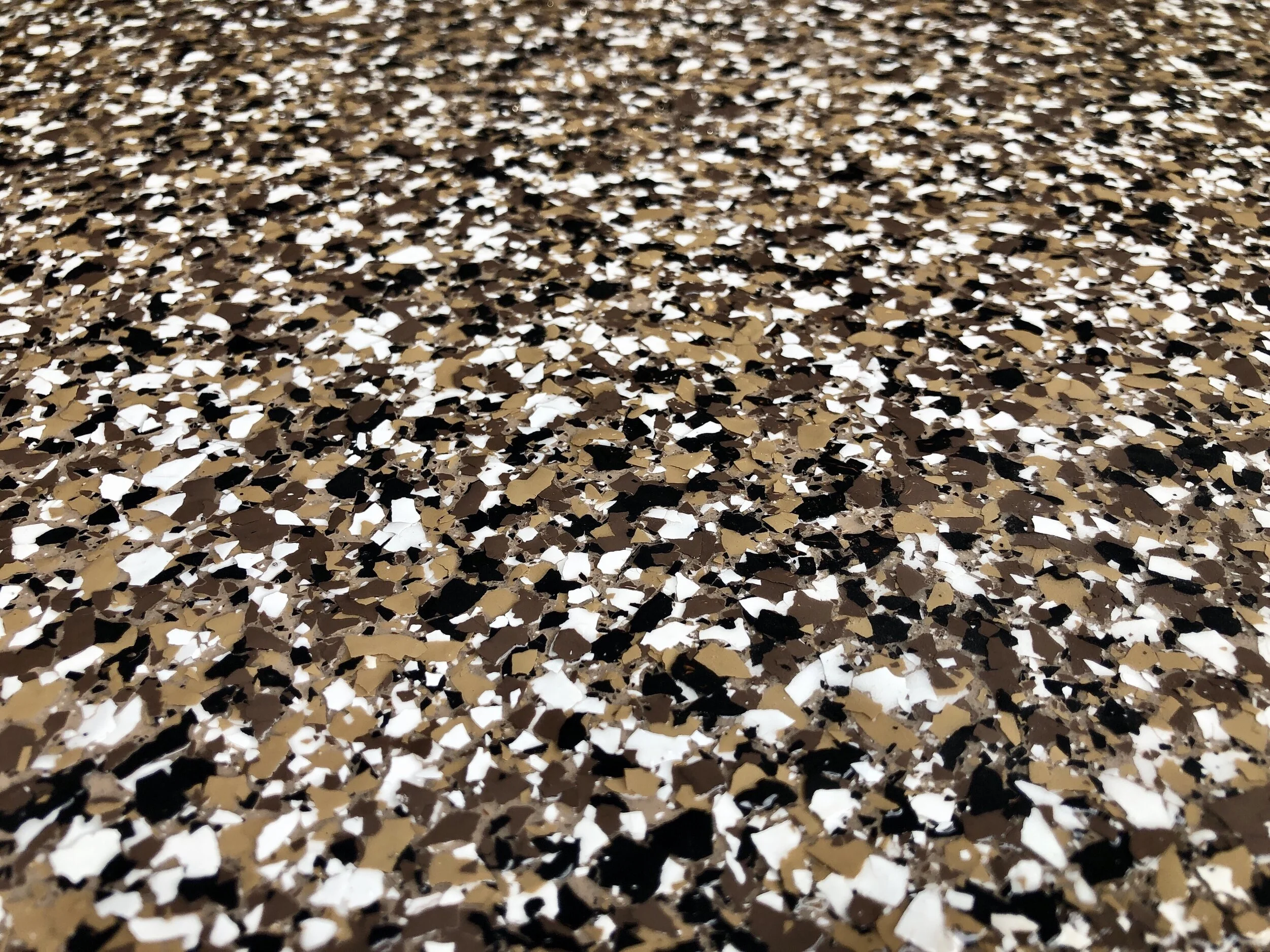If you’re like most Minnesotans, you get a LOT of use out of your deck during our beautiful but fleeting spring, summer & fall months. From grilling and eating meals to lounging and entertaining, your deck is a valuable extension of your home, and one that you want to keep looking good. There is nothing worse than not being able to walk barefoot on your deck because of peeling stain and splinters!
Because our MN decks are constantly exposed to harsh elements, the typical maintenance cycle of a wood deck can vary greatly depending on the type of stain that was used. If your deck was stained with a water-based stain or any “film-forming” stain, it might last anywhere from 1-3 years. That means that roughly every 1-3 years, when your deck is showing signs of peeling and flaking, you’ll need to clean and power wash to remove any loose stain, and then re-stain with the same product in the same color. If your deck was stained using an oil-penetrating stain, you can expect 2-5 years to pass before maintenance will be required. Decks stained with an oil-penetrating stain will never peel or flake, but will instead just fade over time, and will then need to be thoroughly cleaned, power washed and re-stained. Exposure to the elements is also a major factor in determining what maintenance cycle range your deck will fall into.
Power Washing
Power washing your deck is an inexpensive and efficient way to clean and prep it for a new coat of stain. Your deck is a candidate for power washing if you are planning to reapply an oil-penetrating stain. To wash your deck, we recommend first applying a deck cleaning solution, and then power washing. A good deck cleaner will remove gray fibers, dirt, mold, mildew and other impurities deep in your deck boards, that power washing alone won’t be able to accomplish. You will also want to use a deck cleaner on brand new deck boards to ensure that you remove any remnants of mill-glaze, which forms during the milling process and will prevent the stain from soaking into the new wood. After the wood is thoroughly dry, the stain can be applied.
Power washers are extremely powerful and if not used correctly, can easily damage your soft deck boards. Be careful to use a low pressure from a distance, and not stay in the same spot for too long to avoid damage to the wood fibers. If you see the wood fibers start to lift, back off. It’s also best to start power washing your deck in an inconspicuous spot.
Power Sanding
If you have an older deck, you might have noticed that your wood has started to crack and splinter. In order to remedy this problem, the best solution is to power sand the boards to bring them back to a new, smooth surface before applying the stain. We typically recommend sanding floor boards and top rails using a belt sander or palm sander, while wearing protective gear including safety eyewear and a respirator. We start with a heavy grit sand belt (60-80 grit) working backwards on the boards to ensure a smooth surface that will accept the stain consistently. Before sanding, make sure there is no rain in the forecast. If the wood gets wet after it has been sanded but before the stain has been applied, it’s back to square one.
Sanding your deck vs washing your deck is more labor intensive, but the results of bringing life back to a worn and weathered deck are worth it. As professionals we have the tools and knowledge required to sand your deck properly and efficiently. We use high torque belt sanders and palm sanders. Floor sanders won’t be able to reach the entire surface of most wooden planks, and can only sand surfaces that are perfectly flat (most home improvement stores will not rent you a floor sander for your deck). Because deck boards are slightly curved, the floor sander will take too much off in some sections, and not enough in others. Sanding is a very manual process, so if you’re not up for the challenge, it’s typically better to leave it to the pros.
Since no two decks are alike, and are built using varying types of wood and coated with varying types of stains and paints (after being prepped using a variety of techniques and skill levels), a thorough examination of your deck and its current condition will be required to determine if power washing or sanding, or a combination of both, will be your best bet to get your deck summer ready. In order to restore your deck to its original glory, we recommend taking your time and correctly prepping your deck before staining, to make your deck stain last as long as possible.
HIRING PROFESSIONALS
When hiring a professional company to refinish your deck or apply stain to your new deck, be sure to ask about their process, and about the type of stain that they recommend applying, and why. We hope that this post helped to shed some light on the best ways to clean and prep your deck, and outlined some of the benefits and drawbacks of both power washing and power sanding. Twin Cities Resurfacing is always happy to help advise you on techniques and products, and of course professionally refinish your deck.

